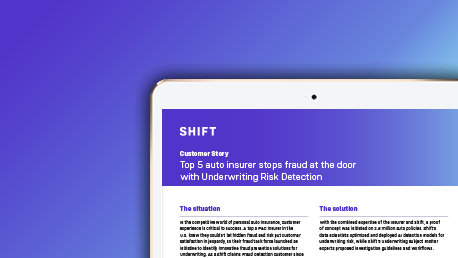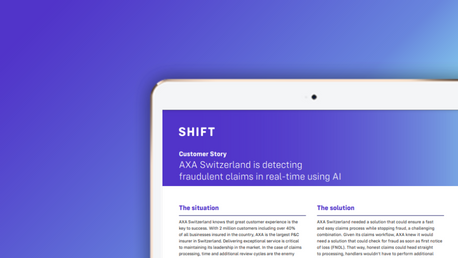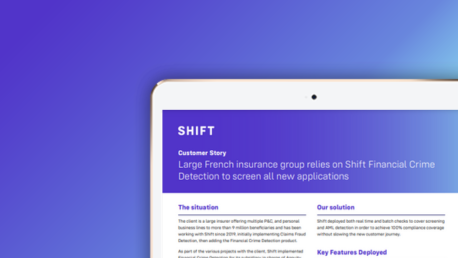The premium leakage challenge
Premium leakage – the deliberate misrepresentation by applicants and policyholders to reduce their premium – costs insurers an estimated $50 billion USD annually. While insurers understand the value in pursuing premium leakage, there are challenges with historic approaches.
- Manual investigations significantly slow the underwriting process and may dissuade new policyholders.
- Determining which applications to flag may lead to significant missed opportunities when higher impact opportunities are prioritized in order to keep the majority of applications moving quickly.
- Traditional rules-based solutions can be slow and inaccurate, flagging anomalies that don't necessarily indicate premium leakage, and wasting Underwriter time an effort.
Case Study: Leading European auto insurer reduces premium leakage with AI-based underwriting
The Head of Innovation at one of Shift’s European P&C clients recently began a review across their business to identify applications for Shift’s AI decisioning capabilities. In order to address the challenges of premium leakage and inefficient investigations, the insurer ran a proof of concept with Shift’s Underwriting Risk Detection.
Case Summary
The challenges included:
- Missed premium risk from legacy underwriting process
- Inefficient manual investigation
Shift's implementation included three key features:
- AI decisioning built for underwriting
- Expanded detection to discover a broader scope of suspicious activity
- Workflow integration, including automated alerts with 100% explainable context
Key results in the first 5 months:
- 3x the expected relevant policy risk alerts
- $1M USD in annual projected underwriting risk mitigation
- 100+ identified risky policies missed in prior investigation


